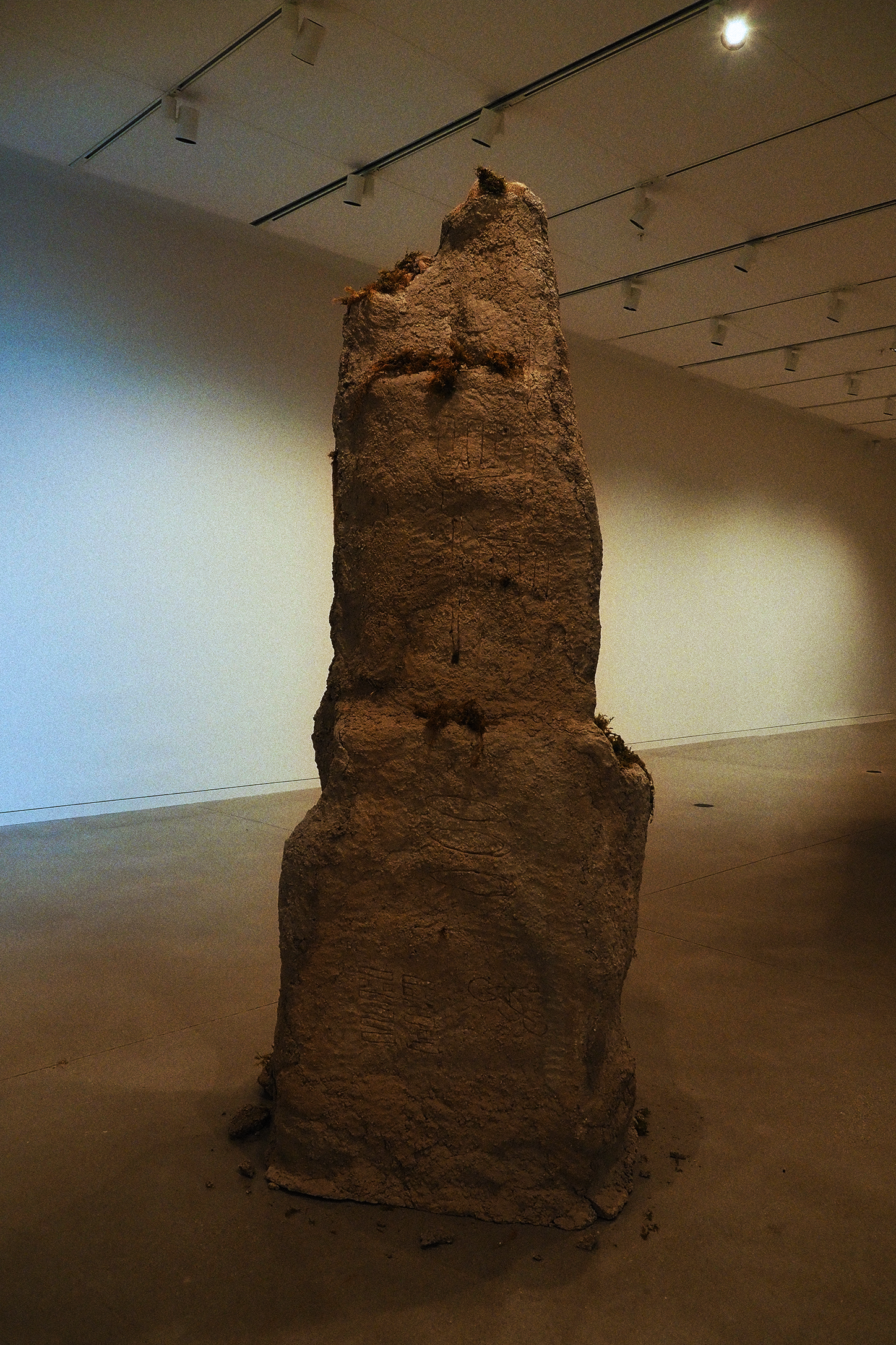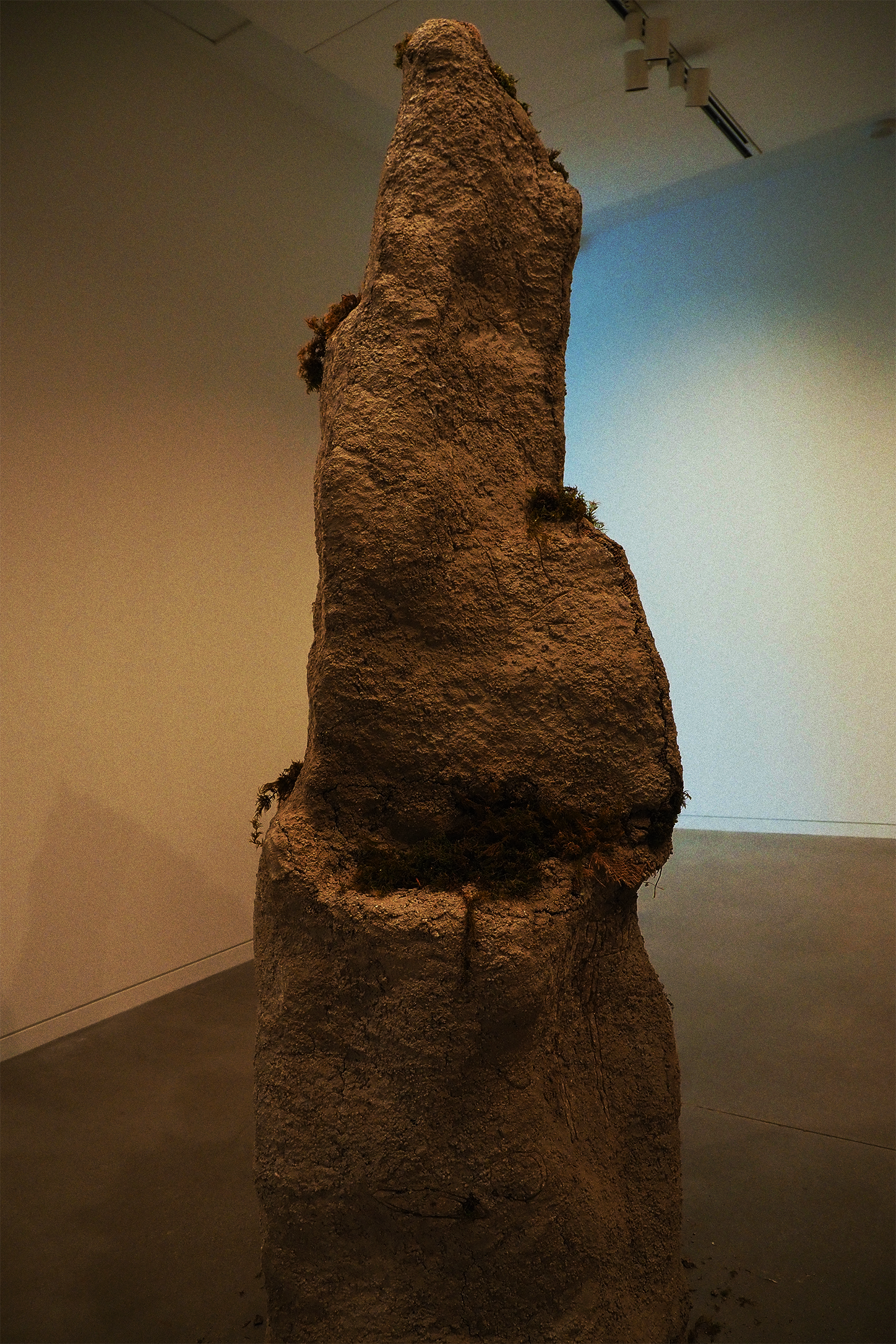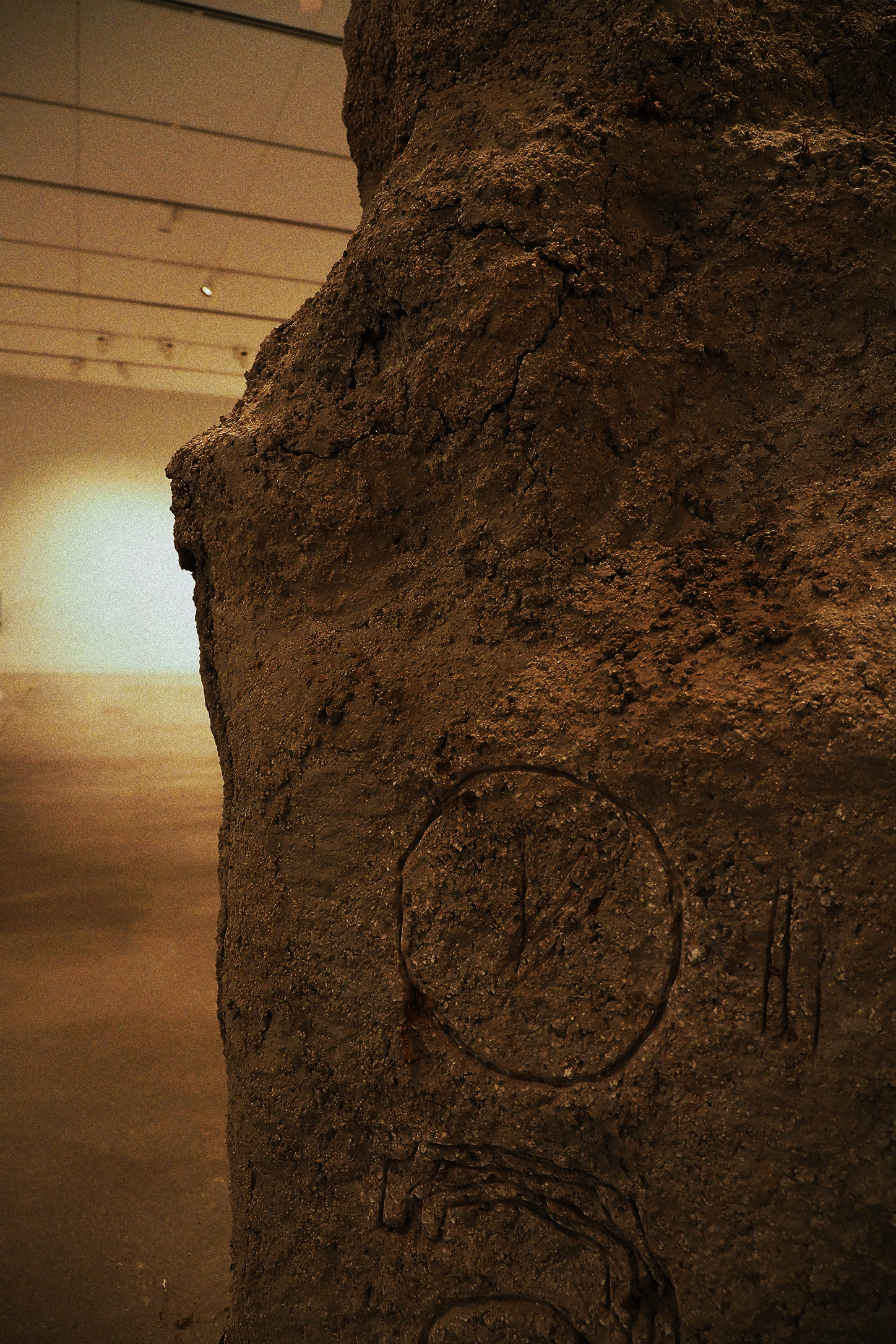
Mantle (2021)
hypertufa, polystyrene, wire, burlap
—
What happens when we see inside the machine?
For centuries, Western thought has perpetuated an idea of humanism that separates man from beast, extracting Earth’s apex predator from its own ecosystem. We’ve devised mechanisms of mind and body which excuse the separation, claiming sentience, dasein, or other concepts as explanations for the divide. The ‘anthropogenic’ machine of Giorgio Agamben is one which allows man to recognise itself and its unique features in relation to the lesser ape, in order to establish and separate itself as distinctly human. However, as a greater awareness is growing today of man’s unclear boundary with its ecology, the anthropogenic machine is starting to break down.
Mantle stands as an example of this machine: a monumental obelisk to the might of homo sapiens that reassures man of itself. It resembles a stone of the Earth, suggesting the arrogant power to replicate geological processes using the modernist materials of cement and plastic. These materials have become exposed through developing cracks in the facade of the machine as its function for humanism is failing.
The carvings on its surface—a uniquely-human expression—display data, images, or symbols whose meanings are lost to time, yet still open to interpretation. They are material evidence of the self-reflection humans have assumed to be unique to them. However, their uselessness proves the inferiority of humanity in the face of Earthly ecological time. Not all is cynical as, harnessing this corrupt simulacrum of geology is a colony of moss, suggesting a beyond to the end of the Anthropocene.



